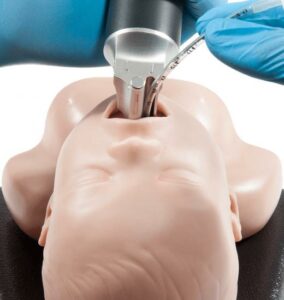Background

During a laryngoscopy, a significant pressure is applied to insert a tube into the trachea to maintain an open airway and oxygenate patients.
- 50 million intubation procedures are performed globally every year1
- Direct laryngoscopy: 51.2% of patients experienced soft tissue trauma due to the strong pressure applied2.
Problem Statement
The laryngoscope equipped with pressure-sensors aims to supplement accurate training for medical professionals such as doctors and paramedics to prevent soft palate injuries by providing feedback from the quality of pressure exerted.
- Peterson K, Ginglen JG, Desai NM, et al. Direct Laryngoscopy. [Updated 2021 Jan 31]. In: StatPearls [Internet]. Treasure Island (FL): StatPearls Publishing; 2021 Jan-. Available from: https://www.ncbi.nlm.nih.gov/books/NBK513224/
- Engoren, M., Rochlen, L.R., Diehl, M.V. et al. Mechanical strain to maxillary incisors during direct laryngoscopy. BMC Anesthesiol 17, 151 (2017). https://doi.org/10.1186/s12871-017-0442-z